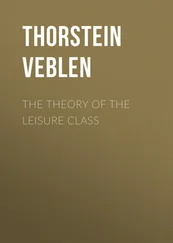With the fighting barbarians, on the other hand, male deities commonly take the first rank, and their ritual symbolises the mastery of the god and the servitude of the worshipper.
It is true, of course, that both of weapons and of cult objects far the greater number that were once in use will have disappeared, since most of the implements aid utensils of stone-age cultures are, notoriously, made of wood or similar perishable materials. 80So that the finds give no complete series of the appliances in use in their time; whole series of objects that were of first-rate importance in that culture having probably disappeared without leaving a trace. But what is true in this respect of weapons and cult objects should be equally true of tools, or nearly so. So that the inference to be drawn from the available material would be that the early neolithic culture of north Europe, the Aegean, and other explored localities presumed to belong in the same racial and cultural complex, must have been of a prevailingly peaceable complexion. With the advance in technology and in the elaboration and abundance of objects that comes into sight progressively through the later neolithic period, down to its close, this disproportion between tools and weapons (and cult objects) grows more impressive and more surprising. Hitherto this disproportion has been more in evidence in the Scandinavian finds than in the other related fields of stone-age culture, unless an exception should be made in favour of the late neolithic sites explored at Anau. 81But this archaeological outcome, setting off the Baltic stone age as peculiarly scant of weapons and peculiarly rich in tools, may be provisional only, and may be due to the more exhaustive exploration of the Scandinavian countries and the uncommonly abundant material from that region. In the later (mainly Scandinavian) neolithic material, where the weapons are to be counted by dozens the tools are to be counted by hundreds, according to a scheme of classification in which everything that can be construed as a weapon is so classed, and there are many more hundreds of the one class than there are dozens of the other. 82As near as can be made out, cult objects are similarly infrequent among these materials even after some appreciable work in pottery comes in evidence.
What has just been said is after all of a negative character. It says that nothing like a warlike, predatory, or fearsome origin can be proven from the archaeological material for the neolithic culture of those racial stocks that have counted for most in the early periods of Europe. The presumption raised by this evidence, however, is fairly strong. And considerations of the material circumstances in which this early culture was placed, as well as of the spiritual traits characteristically required by these circumstances and shown by the races in question, point to a similar conclusion. The proclivity to unreasoning fear that is visible in the superstitious practices of so many savage communities and counts for so much in the routine of their daily life, 83is to all appearance not so considerable an element in the make-up of the chief European stocks.
Perhaps it enters in a less degree in the spiritual nature of the European blond than in that of any other race; that race - or its hybrid offspring - has at any rate proved less amenable to religious control than any other, and has also shown less hesitation in the face of unknown contingencies. And the circumstances of the presumed initial phase of the life-history of this race would appear not to have favoured a spiritual (instinctive) type largely biassed by an alert and powerful sentiment of unreasoning fear. So also an aggressive humanitarian sentiment is as well at home in the habits of thought of the north-European peoples as in any other, such as sorts ill with a native predatory animus. If it be assumed, as seems probable, that the situation which selectively tested the fitness of this stock to survive was that of the early post-glacial time, when its habitat in Europe was slowly being cleared of the ice-sheet, it would appear antecedently probable that the new (mutant) type which made good its survival in following up the retreating fringe of the ice-sheet and populating the land so made available will not have been a people peculiarly given to fear or to predation. A great facility of this kind, with its concomitants of caution, conservatism, suspicion and cruelty, would not be serviceable for a race so placed. 84Even if it were a possible undertaking it would not be much to the present purpose to trace out in detail the many slow and fumbling moves by which any given race or people, in Europe or elsewhere, have worked out the technological particulars that have led from the beginnings down through the primitive and later growth of culture. Such a work belongs to the ethnologists and archaeologists; and it is summed up in the proposition that men have applied common sense, more or less hesitatingly and with more or less refractory limitations, to the facts with which they have had to deal; that they have accumulated a knowledge of technological expedients and processes from generation to generation, always going on what had already been achieved in ways and means, and gradually discarding or losing such elements of the growing technological scheme as seemed no longer to be worth while, 85and carrying along a good many elements that were of no material effect but were imposed by the logic of the scheme or of its underlying principles (habits of thought).
Of the early technological development in Europe, so far as it is genetically connected with the later Western civilisation, the culture of the Baltic region affords as good and illustrative an object lesson as may be had; its course is relatively well known, simple and unbroken.
Palaeolithic times do not count in this development, as the neolithic culture begins with a new break in Europe.
It is known, then, that by early neolithic times on the narrow Scandinavian waters men had learned to make and use certain rude stone and bone implements found in the kitchen-middens (refuse heaps, shell-mounds of Denmark), that they had ways and appliances (the nature of which is not known) for collecting certain shellfish and for catching such game and fish as their habitat afforded, and that they presently, if not from the outset, had acquired the use of certain crop plants and had learned to make pottery of a crude kind. From this as a point of departure in the period of the kitchen-middens the stone implements were presently improved and multiplied, the methods of working the material (flint) and of using the products of the flint industry were gradually improved and extended, until in the long course of time the utmost that has anywhere been achieved in that class of industry was reached. Domestic animals began to be added to the equipment relatively early, 86though at a long interval from the neolithic beginnings as counted in absolute time. Improvement and extension in all lines of stone-working and woodworking industry went forward: except that stone-dressing and masonry are typically absent, owing, no doubt, to the extensive use of woodwork instead. 87Along with this advance in the mechanic arts goes a growing density of population and a wide extension of tillage; until, at the coming of bronze, the evidence shows that these communities were populous, prosperous, and highly skilled in those industrial arts that lay within their technological range.
Apart from the pottery, which may have some merit as an art product, there is very little left to show what may have been their proficiency in the decorative arts, or what was their social organisation or their religious life. The evidences of warlike enterprise and religious practices are surprisingly scanty, being chiefly the doubtful evidence of many and somewhat elaborate tombs. From the tombs (mounds and barrows) and their distribution something may be inferred as to the social organisation; and the evidence on this head seems to indicate a widespread agricultural population, living (probably) in small communities, without much centralised or authoritative control, but with some appre-ciable class differences in the distribution of wealth in the later phases of the period.
Читать дальше












